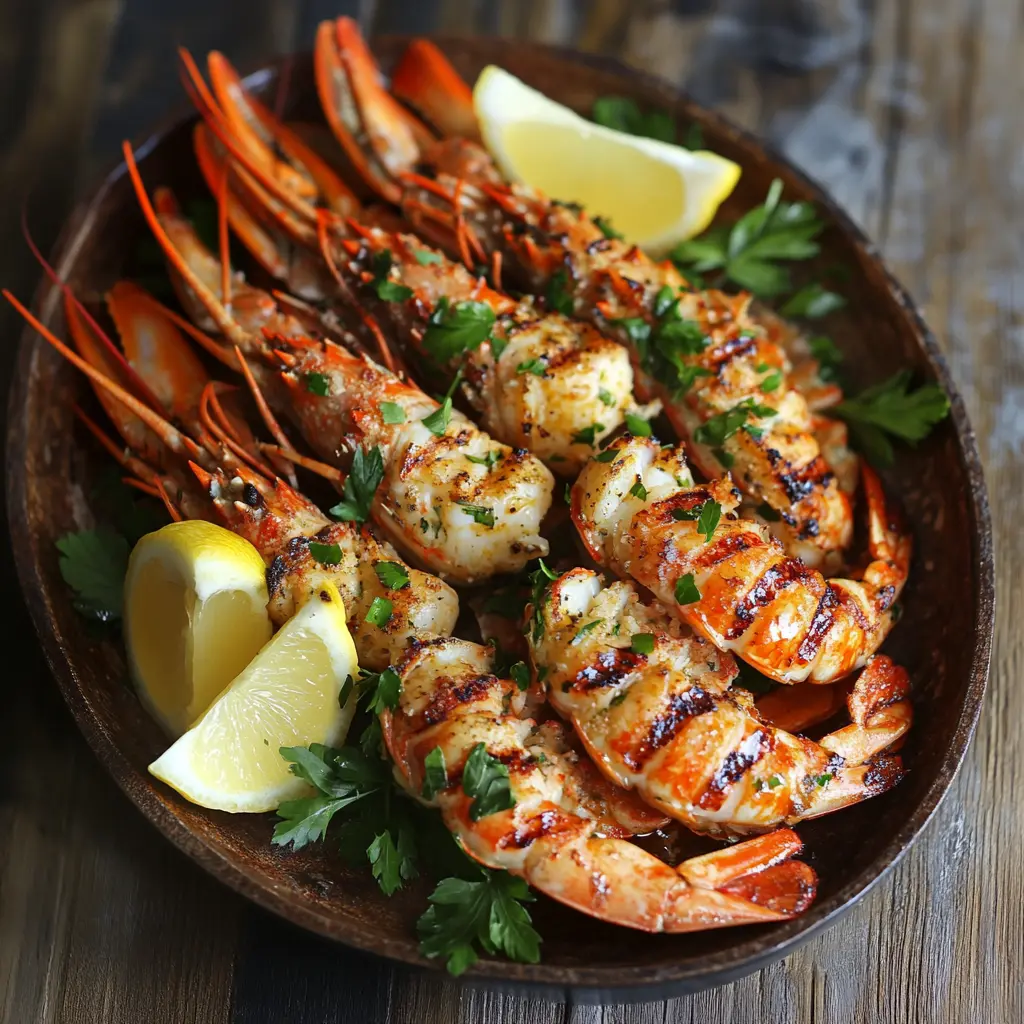Introduction
Langoustine Tails: How to Clean and Cook? Langoustine tails are a sought-after delicacy in the culinary world, celebrated for their sweet, tender meat and versatility in gourmet recipes. While langoustines as a whole are a prized crustacean, the tails are the most commonly consumed part, offering melt-in-your-mouth texture and a flavor reminiscent of lobster but more refined. Whether grilled, sautéed, or used in pastas and risottos, they elevate any dish to gourmet status.
What Are Langoustine Tails?
they are the edible portion of langoustines (Nephrops norvegicus), a type of crustacean also known as Norway lobster. Unlike lobsters, langoustines are smaller, with their tails containing the majority of their sweet, succulent meat. The tails are the star ingredient in many high-end seafood dishes, offering versatility and elegance.
Characteristics of Langoustine Tails
- Size: Smaller than lobster tails, typically about 2–4 inches in length.
- Flavor: Sweet and delicate, with a hint of the sea.
- Texture: Tender and juicy, they almost melt in your mouth when cooked properly.
- Appearance: A vibrant orange-pink shell that brightens further when cooked, with white, translucent meat.
How to Prepare Langoustine Tails
1. Cleaning Langoustine Tails: A Step-by-Step Guide
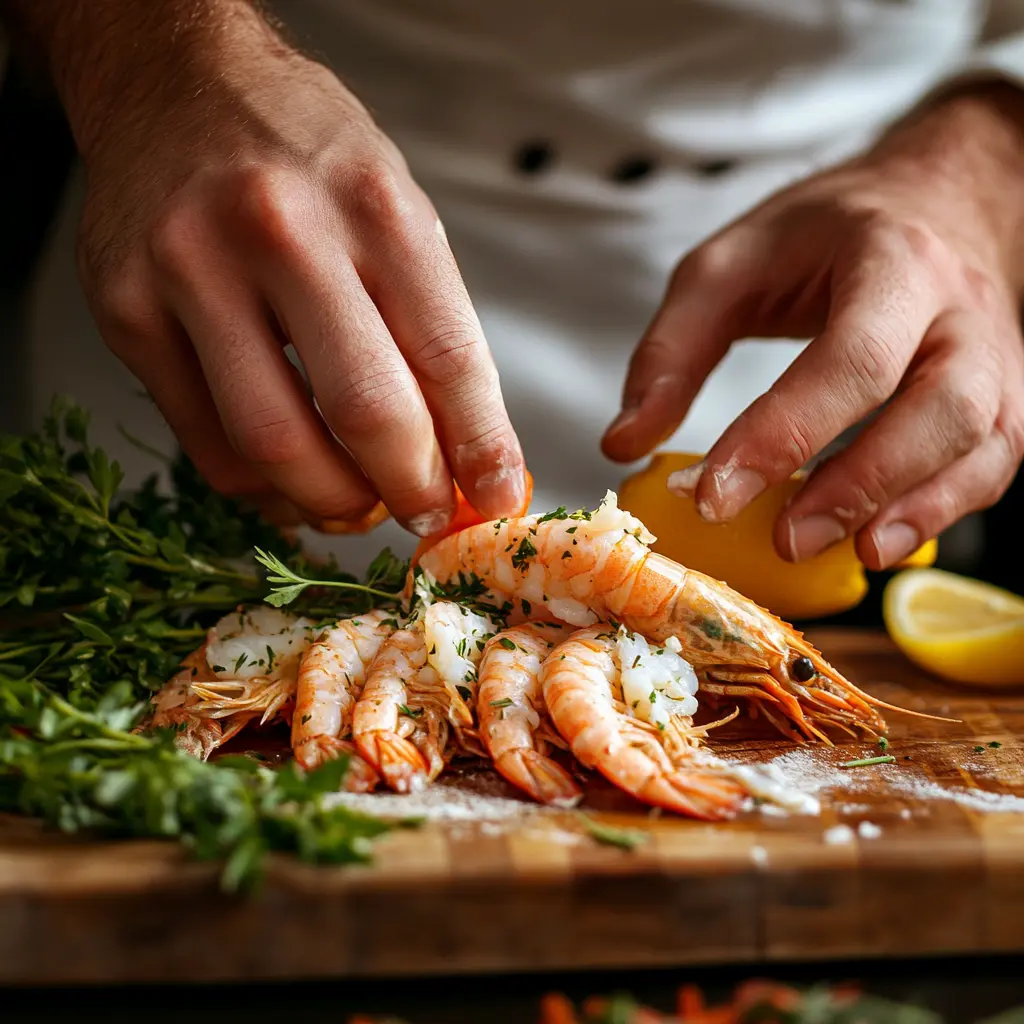
Properly cleaning theme ensures that they are free of grit, debris, and the digestive tract, allowing their delicate flavor to shine. Whether you’re using them for grilling, sautéing, or boiling, here’s how to clean langoustine tails effectively: https://shorturl.at/FkrO7
Step1: Rinse the Tails
- Why: Langoustines may carry sand or debris on their shells, especially if freshly caught.
- How:
- Place theme in a colander.
- Rinse them thoroughly under cold running water, gently rubbing the shells to remove any residue.
- Pat them dry with a clean kitchen towel or paper towels.
Step2: Remove the Shell
- Why: Peeling the shell makes it easier to access the tender tail meat, which is the most commonly used part.
- How:
- Hold the langoustine tail firmly in one hand.
- Use your other hand or kitchen shears to gently crack the underside of the shell along its length.
- Peel back the shell carefully, starting from the wide end and working toward the tail.
- Be gentle to avoid tearing the delicate meat.
Step3: Remove the Vein
- Why: The vein, or digestive tract, can have a gritty texture and may affect the taste if not removed.
- How:
- Use a small knife or skewer to make a shallow cut along the back of the exposed tail meat.
- Locate the black vein running along the center.
- Gently lift the vein with the tip of the knife or skewer and pull it out completely.
- Discard the vein and rinse the meat under cold water if needed.
Step4: Inspect for Cleanliness
- Why: Ensuring the tails are thoroughly cleaned will enhance the overall quality and presentation of your dish.
- How:
- Check for any remaining bits of shell or debris.
- If necessary, rinse the tails again under cold water and pat them dry.
Step5: Store or Cook Immediately
- Why: Freshly cleaned langoustine tails taste best when cooked right away.
- How:
- If you’re not cooking them immediately, place the cleaned tails in an airtight container.
- Store them in the refrigerator for up to 24 hours.
- If freezing, use a vacuum-sealed bag to preserve freshness.
Tips for Easier Cleaning
- Use Kitchen Shears: These make cracking the shell and peeling much easier than using your hands alone.
- Work Slowly: Langoustine meat is delicate, so handle it gently to avoid tearing.
- Save the Shells: Don’t discard the shells! Use them to make flavorful stocks, bisques, or sauces.
By following these steps, you can ensure your langoustine are perfectly cleaned and ready to be the star ingredient in any dish. Proper cleaning not only improves the texture and flavor but also elevates the overall presentation of your meal.
2. Cooking Langoustine Tails: A Step-by-Step Guide
Cooking theme is a simple process that allows their natural sweetness and tender texture to shine. Whether you’re grilling, sautéing, boiling, or broiling them, langoustine cook quickly and adapt beautifully to various flavors. Follow this guide for perfectly cooked theme every time.
Grilling Langoustine Tails
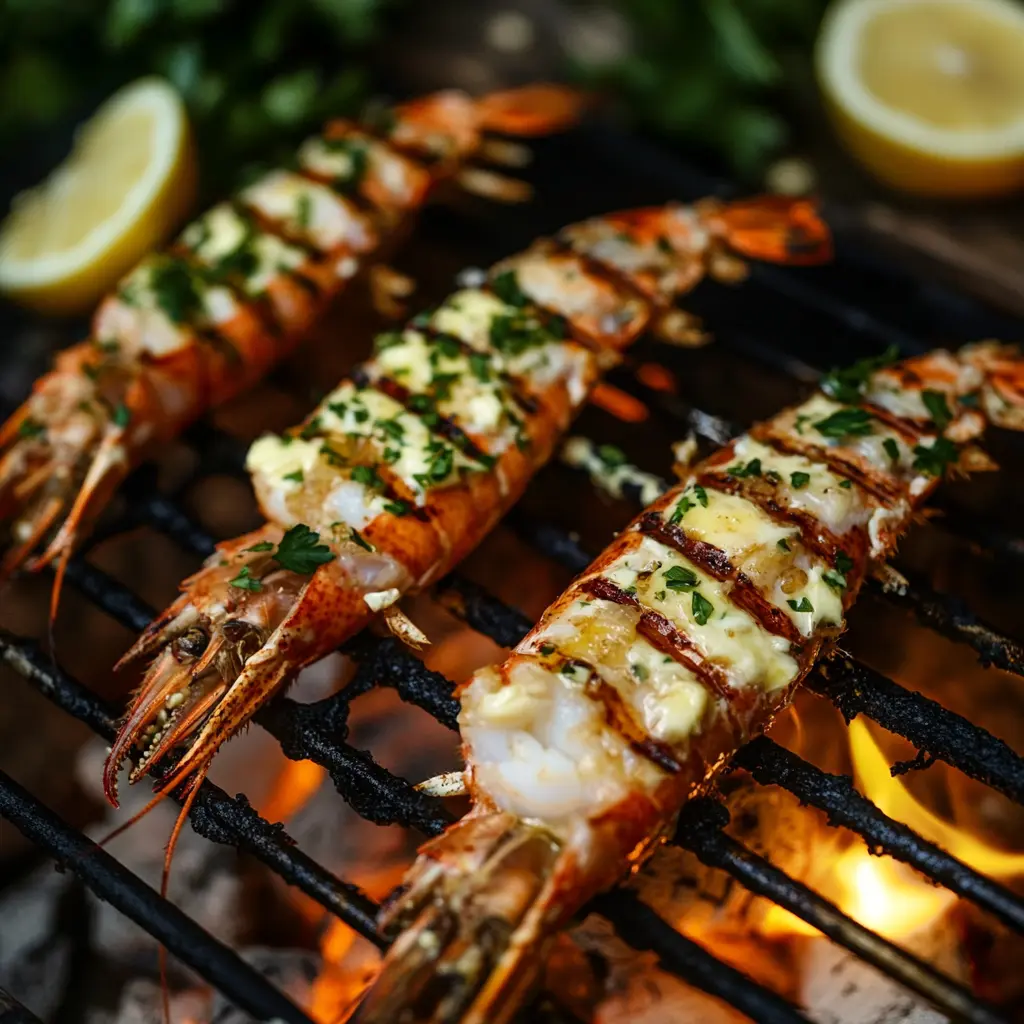
Grilling theme enhances their natural sweetness and adds a smoky flavor.
Ingredients:
- Langoustine tails, cleaned
- 2 tbsp olive oil
- 2 cloves garlic, minced
- Salt and black pepper to taste
- Lemon wedges and parsley for garnish
Instructions:
- Preheat the grill to medium-high heat.
- Brush theme with olive oil and season with garlic, salt, and pepper.
- Place the tails flesh-side down on the grill.
- Cook for 2–3 minutes per side until the shells turn bright orange and the meat becomes opaque.
- Serve with a squeeze of lemon juice and a sprinkle of parsley.
Sautéing Langoustine Tails
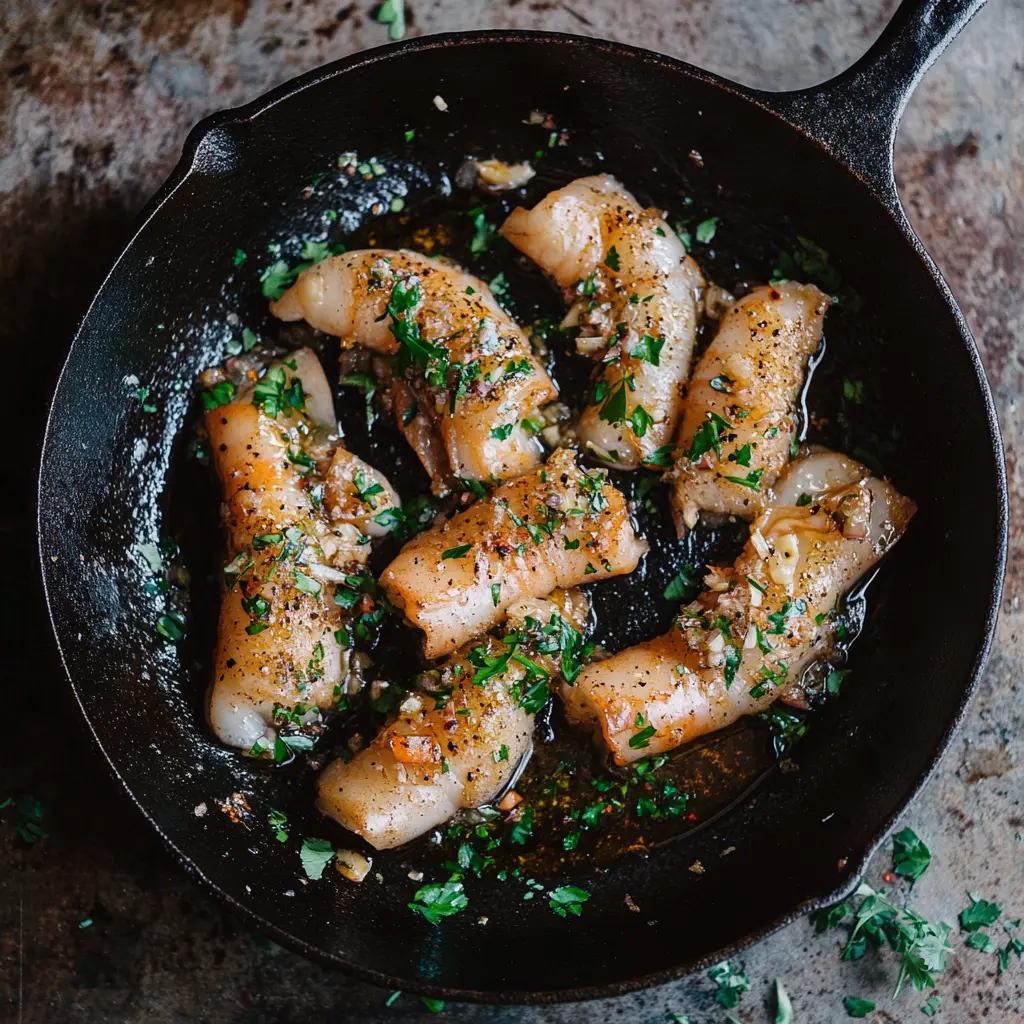
Sautéing theme in butter or olive oil creates a quick, flavorful dish that’s perfect for pasta, risottos, or salads.
Ingredients:
- Langoustine tails, cleaned
- 2 tbsp butter or olive oil
- 2 cloves garlic, minced
- 1 tbsp fresh parsley, chopped
- Salt and pepper to taste
Instructions:
- Heat butter or olive oil in a skillet over medium heat.
- Add garlic and sauté until fragrant, about 1 minute.
- Add theme and cook for 2–3 minutes, stirring occasionally, until the meat turns opaque.
- Sprinkle with parsley and season with salt and pepper. Serve immediately.
Boiling Langoustine Tails
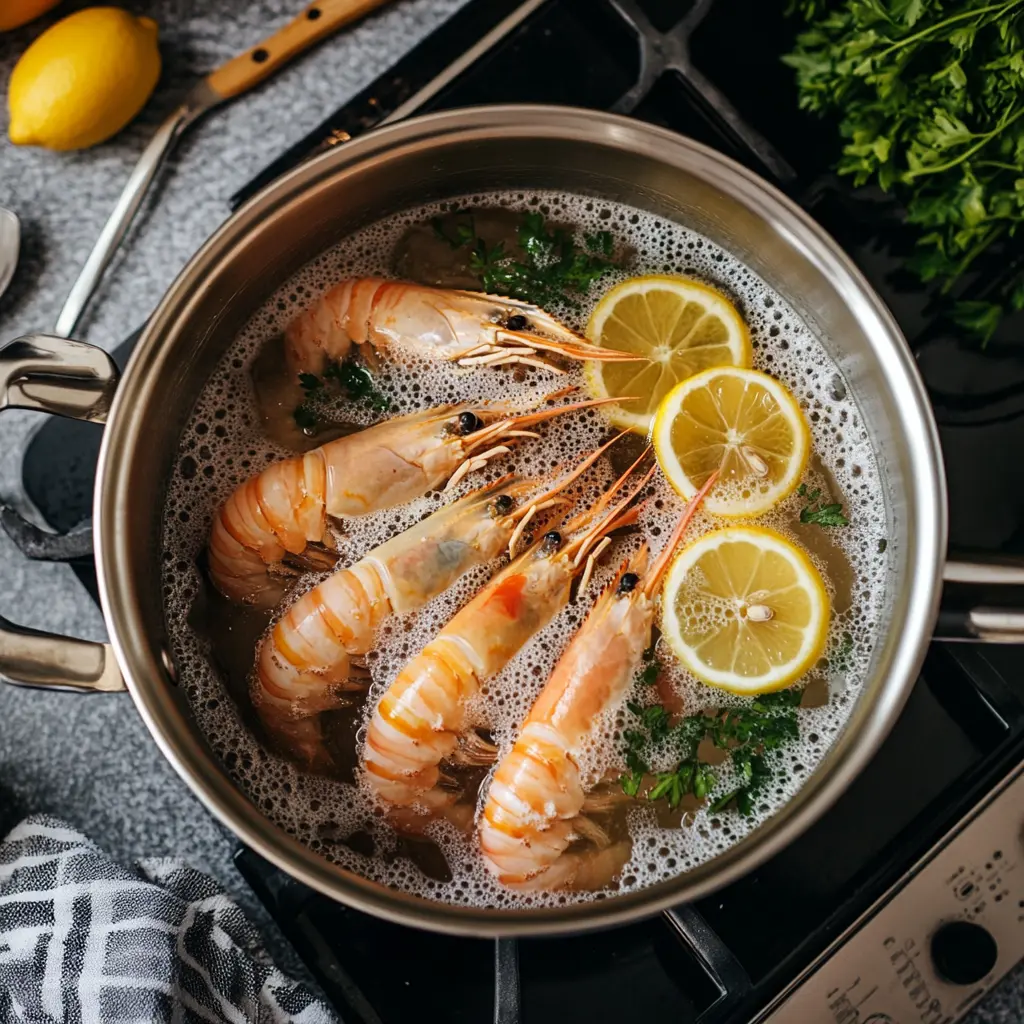
Boiling theme is a simple method that keeps them moist and tender, ideal for salads or chilled appetizers.
Ingredients:
- Langoustine tails, cleaned
- Water
- 1 tbsp salt
- Lemon slices (optional)
Instructions:
- Bring a large pot of salted water to a boil.
- Add theme and reduce the heat to a gentle simmer.
- Cook for 2–3 minutes, depending on their size.
- Remove the tails with a slotted spoon and serve immediately or cool for use in other recipes.
Broiling
Broiling langoustine tails gives them a caramelized finish and locks in their juices.
Ingredients:
- Langoustine tails, cleaned
- 3 tbsp garlic butter
- 1 tsp paprika or chili flakes (optional)
Instructions:
- Preheat the broiler to high.
- Arrange theme flesh-side up on a baking sheet.
- Spread garlic butter evenly over the tails and sprinkle with paprika or chili flakes if desired.
- Broil for 3–4 minutes, or until the meat is golden and bubbly. Serve immediately.
Steaming
Steaming theme is a gentle cooking method that preserves their delicate flavor and texture.
Ingredients:
- Langoustine tails, cleaned
- Water
- Lemon slices or herbs for flavoring
Instructions:
- Bring water to a boil in a steamer pot.
- Place the langoustine tails in the steamer basket.
- Steam for 4–5 minutes, or until the shells turn bright orange and the meat is opaque.
- Serve with melted butter or aioli for dipping.
Tips for Cooking Langoustine Tails
Langoustine tails are a gourmet delicacy, and cooking them perfectly is essential to highlight their sweet, tender flavor. Here are expert tips to help you prepare langoustine tails like a pro, ensuring delicious results every time:
1. Don’t Overcook Them
- Why: Langoustine tails cook quickly, and overcooking can make the meat rubbery and tough.
- How: Watch for the meat to turn opaque and the shells to become bright orange. This typically takes only 2–3 minutes, depending on the cooking method.
2. Use High Heat for Quick Methods
- Why: Cooking langoustine tails over high heat, such as grilling or sautéing, seals in their natural juices and enhances their flavor.
- How: Preheat your grill, skillet, or broiler to ensure even cooking. High heat methods also give a slightly caramelized exterior that adds depth to the dish.
3. Season Lightly to Enhance Flavor
- Why: The natural sweetness of langoustine tails shines when paired with simple seasonings. Heavy marinades or sauces can overpower their delicate flavor.
- How: Stick to basics like garlic, olive oil, lemon, and fresh herbs. Add a touch of paprika or chili flakes for subtle heat if desired.
4. Thaw Frozen Tails Properly
- Why: Improper thawing can affect texture and lead to uneven cooking.
- How: Thaw frozen langoustine tails overnight in the refrigerator or under cold running water for a faster option. Avoid thawing in warm water or microwaving, as this can start the cooking process prematurely.
5. Cook the Shells for Extra Flavor
- Why: Cooking langoustine tails with their shells on enhances flavor and helps protect the delicate meat from drying out.
- How: If grilling or broiling, split the shells lengthwise to expose the meat while keeping the shells intact for added flavor.
6. Remove the Vein for a Clean Finish
- Why: The vein (digestive tract) can have a gritty texture and affect presentation.
- How: Use a skewer or knife to remove the vein after peeling or splitting the tails.
7. Pair with Complementary Ingredients
- Why: Langoustine tails pair beautifully with light, fresh flavors that don’t overpower their sweetness.
- How:
- Herbs: Use parsley, thyme, or dill for aromatic notes.
- Citrus: A squeeze of lemon or lime brightens the flavor.
- Butter or Olive Oil: Adds richness while letting the langoustine shine.
8. Use the Shells for Stock or Sauce
- Why: The shells are packed with flavor and can be used to create a rich base for soups, sauces, or risottos.
- How: Simmer the shells with water, garlic, onions, and herbs to make a flavorful seafood stock.
9. Choose the Right Cooking Method
- Why: Each cooking method brings out different qualities in langoustine tails.
- How:
- Grilling: Adds smokiness and caramelization.
- Sautéing: Perfect for quick, flavorful dishes like pasta or salads.
- Boiling: Keeps them moist and tender, ideal for chilled recipes.
- Broiling: Creates a golden, slightly crisp finish.
10. Serve Immediately
- Why: Langoustine tails are best enjoyed fresh and hot, as they can lose their tenderness if reheated.
- How: Serve them right after cooking to preserve their juicy texture and vibrant flavor.
11. Experiment with Regional Recipes
- Why: Langoustine tails are a versatile ingredient celebrated in many cuisines.
- How:
- Try Mediterranean-style grilled langoustine tails with olive oil and oregano.
- Go for Asian-inspired sautéed tails with soy sauce, ginger, and sesame oil.
- Make a French-style bisque using langoustine tails and their shells.
12. Test for Doneness
- Why: Undercooked or overcooked langoustine tails can ruin the dish.
- How: Look for visual cues:
- The meat should turn opaque.
- The shells should be bright orange.
- Press lightly; the meat should feel firm but not rubbery.
Cooking langoustine tails doesn’t have to be complicated. With these tips, you can consistently prepare tender, flavorful tails that bring a touch of elegance to any meal. Whether grilling, boiling, or sautéing, following these guidelines will ensure your langoustine tails are a show-stopping addition to your seafood repertoire.
Pairing Suggestions
- Pasta: Toss grilled or sautéed langoustine tails with linguine, olive oil, garlic, and fresh herbs for a quick and elegant dish.
- Risotto: Add steamed langoustine tails to a creamy seafood risotto for a luxurious meal.
- Salads: Use chilled boiled langoustine tails to top fresh salads with citrus or vinaigrette dressings.
Cooking langoustine tails is straightforward and rewarding, allowing you to create dishes that look and taste like they belong in a fine dining restaurant. Experiment with these methods to find your favorite way to prepare this exquisite seafood delicacy.
3. Removing the Vein
- Use a sharp knife to make a shallow cut along the back of the tail.
- Gently lift out the black vein (the digestive tract) with a skewer or knife tip.
Best Recipes for Langoustine Tails
1. Langoustine Tail Pasta
Toss sautéed langoustine tails with linguine, garlic, olive oil, and cherry tomatoes for a quick and elegant dinner.
2. Grilled Langoustine Tails
Serve grilled langoustine tails with a squeeze of lemon and a sprinkle of parsley as a stunning appetizer or main course.
3. Langoustine Risotto
Incorporate theme into a creamy risotto, adding richness and sweetness to this classic Italian dish.
4. Langoustine Salad
Use chilled langoustine tails in a fresh green salad with avocado, citrus segments, and a light vinaigrette.
5. Langoustine Tempura
Coat theme in a light tempura batter and fry until golden for a crispy, flavorful appetizer.
Nutritional Benefits
they are not only delicious but also a nutritious seafood option. They are:
- High in Protein: Great for muscle repair and growth.
- Low in Fat: A lean source of seafood, ideal for healthy eating.
- Rich in Omega-3 Fatty Acids: Supports heart and brain health.
- Packed with Vitamins and Minerals: Includes vitamin B12, iodine, and selenium, essential for overall well-being.
How to Store Langoustine Tails
- Fresh Tails:
- Store in the refrigerator at 32°F–40°F.
- Cook within 1–2 days for best quality.
- Frozen Tails:
- Keep in a sealed container or vacuum-packed bag in the freezer.
- Thaw in the refrigerator overnight before cooking.
FAQs About
1. How do langoustine tails differ from lobster tails?
they are smaller, sweeter, and more delicate in flavor compared to the robust and firmer lobster tails.
2. Can I cook theme from frozen?
Yes, you can cook them directly from frozen, though thawing first helps ensure even cooking.
3. Are langoustine tails healthy?
Absolutely! They are low in calories, rich in protein, and provide essential omega-3 fatty acids.
4. How long do they take to cook?
Cook theme very quickly—usually within 2–3 minutes.
5. What dishes pair well with langoustine tails?
They pair beautifully with pasta, risottos, fresh salads, and crusty bread for dipping in sauces.
Conclusion
Langoustine tails are a true culinary gem, offering a sweet, delicate flavor and tender texture that can elevate any dish. Whether grilled, sautéed, or incorporated into elegant recipes like pasta or risotto, they provide a gourmet seafood experience that’s simple to prepare. With their quick cooking time and versatility, they are a must-try for seafood lovers looking to bring elegance to their dining table.https://royalesrecipes.com/langoustine-tails/

